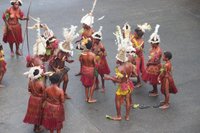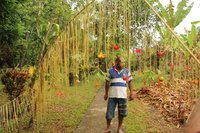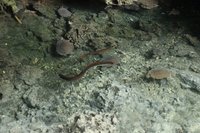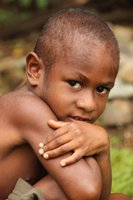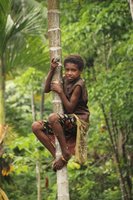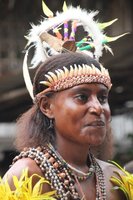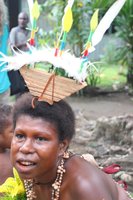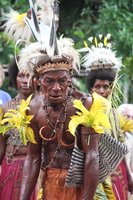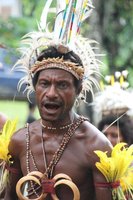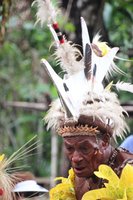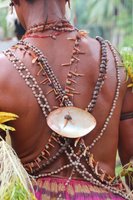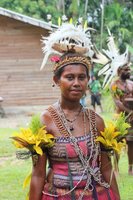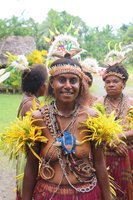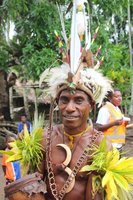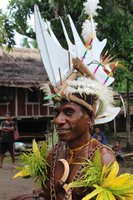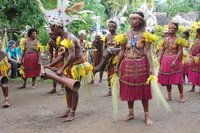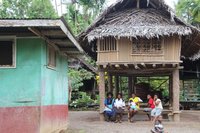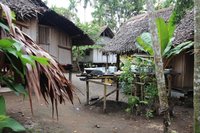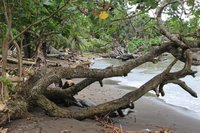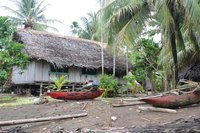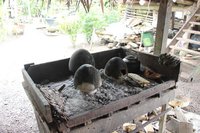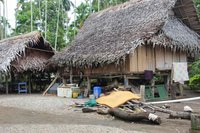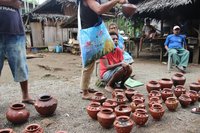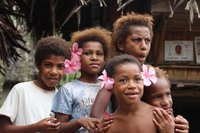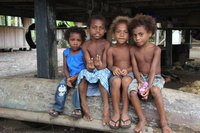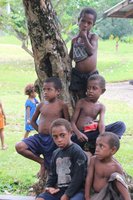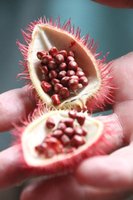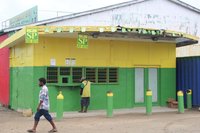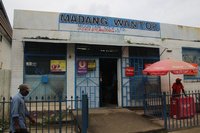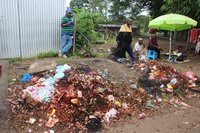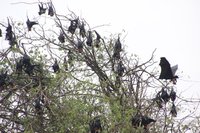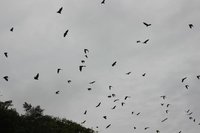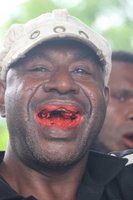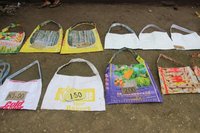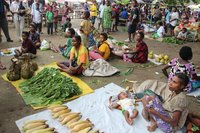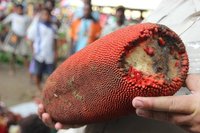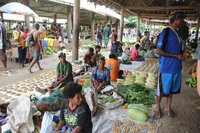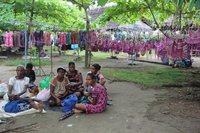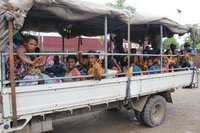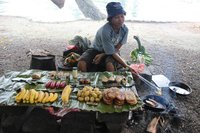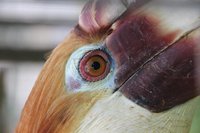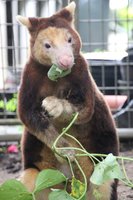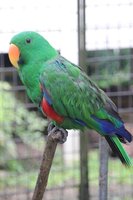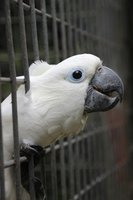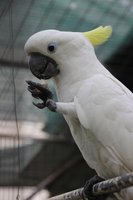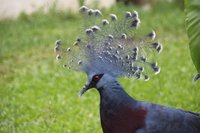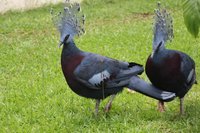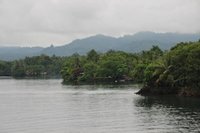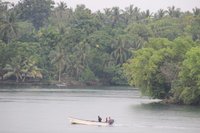| ||||||||||||||||||||||||||||||||||||||||||||||||||||||
 |
||||||||||||||||||||||||||||||||||||||||||||||||||||||
|
Madang and Bilbil Village Bilbil
We set off on a tour to Bilbil Village, first stopping at the sulphur springs where Robinson Crusoe, starring Piers Brosnan, was filmed. (It was here that he learned he was to become the next James Bond).
Prior to 1904, the Bilbil people lived on an island offshore from Madang, trading clay pots along the coast from Kar Kar Island to western Marobe. The island was too small to produce enough food for the inhabitants so trade was essential to life. They moved to the mainland to their existing village to improve their subsistence levels.
Upon arrived at Bibil and were welcomed with a traditional sing-sing. Bilbil is famous for its earthenware pots, which we were shown how they were made, using only their hands – no spinning wheel. The houses in the village are made from traditional materials, such as the Sago Palm, and often an entire house is constructed without the use of nails.
Bilbil women make pots in the traditional way. Clay is collected in the bush, mixed with sand and water and left to dry. A few days later it is formed into a wet mixture and again left to dry. Then the women pull off enough clay and shape the lip of their pot. They hollow out the inside with a stone and beat the outside with a flat board. It is then left to dry again before the final smoothing takes place. Before they are fired, red clay is painted on the pots. This turns them a glossy red and black when they are pulled out of the fire. These pots are put to many uses, the most important being the bride price at ceremonies. Sometimes they are still bartered for taro and yams with the highlanders.
On the return journey we stopped at the local museum, the Haus Tambaran, to observe the historical and cultural items on display. Madang
In the afternoon we went on a walking tour
of the Madang with its colourful array of
fresh fruits and vegetables and handmade
artefacts of shell jewellery, woven bags
(known as bilums), carvings, and Bilbil clay
pots. We saw the enormous fruit bats hanging
from the trees which were awoken into a spectacular
flight upon the clapping and noise from several
locals. We ended at the Madong Resort where we saw
several tree kangaroos and birds, albeit
in cages. We also saw the unique Victoria
Crown Pigeon. Madang Province encompasses four large and many small offshore islands. It covers 27,970 sq km and has 240,000 people. In the south are the Bismark ranges containing PNG’s highest mountain, Mt Wilhelm (4509m).
Madang is a pretty, but basic, town set on a peninsula containing lush gardens and magnificent vistas of tropical seascapes, islands, and inlets. Divers come from around the world to dive sites located just offshore, which contain wartime wrecks, pelagic marine life, reef-filled shallow lagoons, and drift diving off deep drops. In the centre of the harbour is the wreck of a US minesweeper (the Boston), still intact after more than 50 years. | ||||||||||||||||||||||||||||||||||||||||||||||||||||||
 |
||||||||||||||||||||||||||||||||||||||||||||||||||||||













